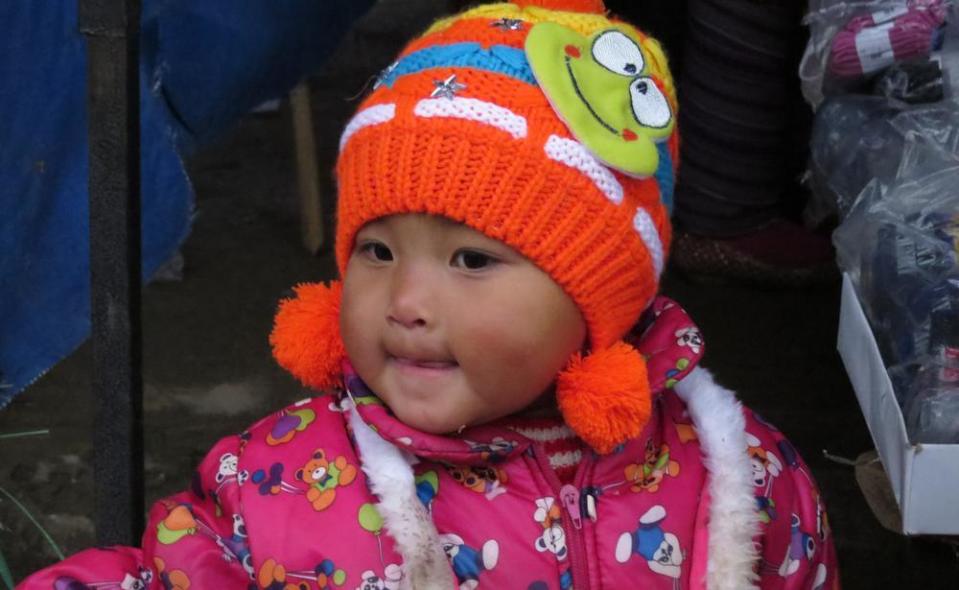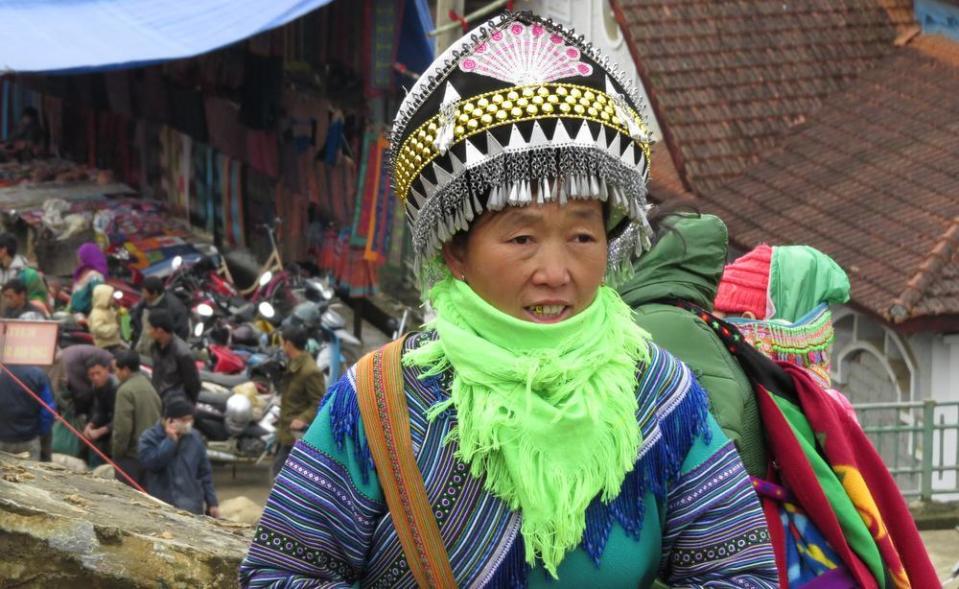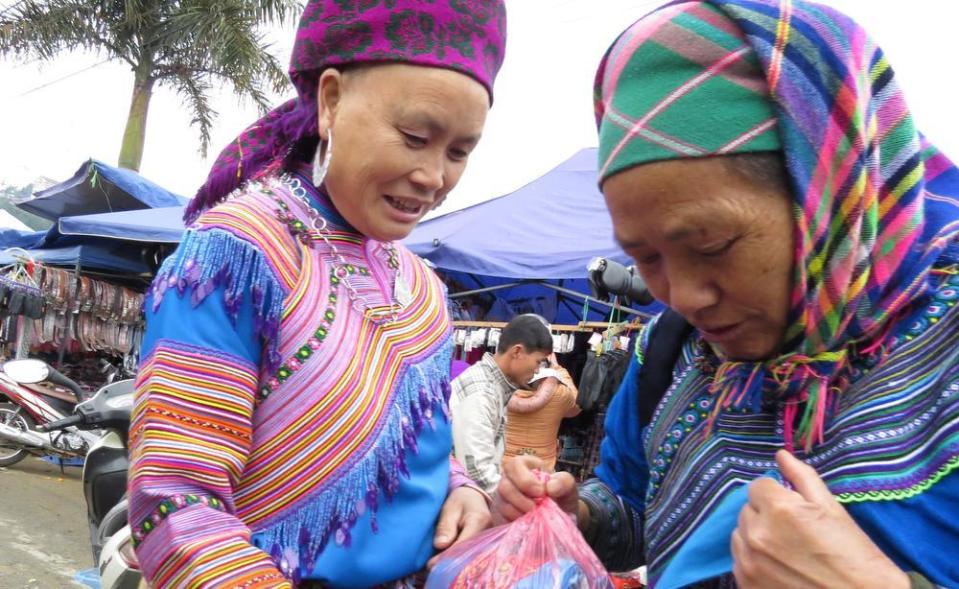Through the marketplace mist
Last year, Zeke Okely was one of our two Young Travel Writer winners, heading with us and fellow winner Patrick Morrison to the Pilbara. And Zeke continues his writing with us, having just filed this story from a recent trip to Vietnam. The photographs were all taken on the Canon camera that he won (as did the other nine finalists) last year.
Traditional Vietnamese markets give an insight into local culture, bringing country folk and city folk together to haggle over fresh produce, examine both machine-made and handcrafted wares and exchange gossip.
Vietnamese markets are often a bewitching mix of ancient and contemporary life and can be found in the most unlikely of places, with goods artfully displayed on the steep pedestrian steps winding up the back roads of Dalat, on the footpaths of Hanoi’s beguiling Old Quarter, in the legendary fresh-food markets perched riverside in Hoi An, or found within the imposing multi- storey concrete complexes in Ho Chi Minh City.
To an unsuspecting first-time traveller to Vietnam such as me, diving headfirst into the heart of local trade initially seemed a little intimidating. However, the more time I spent wandering about the markets, the more the beauty of the organised chaos was revealed.
On a recent trip to Vietnam, there was one market that immediately seized my attention, and has remained in my mind since: the Bac Ha market. The tiny community is in the northern highlands west of Hanoi close to the Chinese border.
Visiting Bac Ha involves an overnight train to Lao Cai, with a 5.30am arrival but is worth the effort.
Lao Cai does not have a lot going for it, other than being the place with the closest train line to Bac Ha and the beautiful Sapa region. Lao Cai was completely rebuilt in a bland utilitarian style after being razed during a bloody battle between China and Vietnam in 1979, one of many tragic events resulting in massive loss of life that the world seems to have forgotten.
I enjoy a dawn breakfast at the oddly named Pineapple Cafe, that appear to serve everything except pineapples, and then it is into an eight-seater van for the two-hour drive up steep, zigzagging mountain roads, often with soft edges crumbling away into the abyss below. Roads that thrill when they don’t kill. Avoiding small rock falls and crazy oncoming traffic, dodging hefty buffalo grazing on the narrow roadsides, deftly turning hairpin bends — all the while texting or gesturing with one hand as he talks animatedly on his mobile phone — our local driver gets us safely through the misty morning to Bac Ha.
As we arrive, Bac Ha is wreathed in swirling mists, giving it an ethereal and mysterious atmosphere. I feel I am really travelling, not just ticking off the “must-see destinations” that are often overrun by fellow tourists.
The Bac Ha market is held only on Sundays from 6am-4pm, and arriving early is highly recommended as it allows more time to be spent in this magnificent and memorable market. There are many different ethnic groups living in the surrounding rural areas and their numbers temporarily swell the size of Bac Ha for a few hours each week.
These rural people appear to live isolated lives for six days a week and are pleased to be amid the bustle of the market scene, often walking for hours fully laden with goods to sell there.
Living in the mysterious mountains around Bac Ha are the distinctive Flower Hmong people, one of the many ethnic groups in this region who display pride in their culture by wearing traditionally handmade clothes despite the readily available cheap Chinese imports piled in massive clothing pyramids throughout the market stalls.
Women from this tribe wear many layers of colourful skirts, leg bindings, aprons with single shoulder fastenings, their clothing covered in intricate embroidery in bright and often fluorescent colours. Teenage girls add even more bling, sewing in extra beads and draping themselves with glittering necklaces and multi- hued scarves as headdresses.
The Flower Hmong women often incongruously team these amazing traditional outfits with modern, pristine white sports shoes, although how they keep them white is beyond belief given all the squelching mud underfoot.
My own hiking boots are caked in mud within minutes. I clearly don’t have the graceful touch ever-present among these people. Sleeping babies are carried in woven fabric slings on the backs of women.
The babies seem to love all the noise and movement, and I never see one who looks unhappy. It is remarkable.
The local men disappear among the swirling colours and bustling activity of the women, wearing more practical but much less impressive modern work clothes. It is like the peacock and the peahen but in reverse gender order.
In addition to the Flower Hmong people trading with furious pace at the markets are the Black Hmong people, and the Red Dzao people, the latter group wearing elf-like pointy red felt hats.
The women of the Black Hmong tribe sell textiles in the markets and I am mesmerised by their amazing hands.
They hand-dye their clothes with natural, locally grown indigo so their hands from the wrist down are permanently stained blue or black.
These are tough women who, despite their diminutive size, refuse to be pushed around by anyone, no matter the circumstances.
It is the old ladies who seem to be the most stubborn and will knock a pesky Westerner aside with surprising strength.
It is simply brilliant how they make their way through the markets, carefully testing, tasting and weighing everything before considering whether or not to start bargaining for it.
The tiny women of the Hmong groups completely own the space. The Red Dzao people are easy to spot in their pointy hats and short red capes, and they act as mobile stores, carrying woven and plastic bags which seem to contain an impossible number and variety of goods for sale.
They are not pushy towards obvious out-of-towners like me but they are keen to engage in friendly conversation involving a lot of smiling and gestures, and in the end, they ask you to buy something from them. It is hard to refuse.
The Bac Ha market is a large and noisy conglomeration of stalls, selling a wide variety of goods, some enticing and others interesting to look at but not generally the usual fare to stuff in your backpack and take home. An animal market on the hill overlooks the rest of the maze of stalls and has live water buffalo, pigs, dogs, chickens, snakes and horses for sale. The same animal species can be found elsewhere in the food sections of the market, no longer snorting, squealing, barking, clucking, hissing or neighing, packaged as various forms of meat.
Water buffalo can be seen commonly throughout farming regions of the Vietnamese countryside. They are muscular beasts, and at the Bac Ha market they stand deep in the mud, generally looking unhappy, as they are prodded and poked by prospective buyers.
I learn the essentials of buffalo buying from a local expert. Buffalo 101: first, choose a buffalo with its facial cowlick positioned lower than its eyes. Apparently, a cowlick above the eyes indicates inadequate intelligence. Next, after eliminating the dumb ones, look for a buffalo whose hoofs are spread like splayed toes, not fused. Splayed toes mean the animal can more easily unstick itself from the muddy rice field while working. Last, for rice-field ploughing purposes, choose a female buffalo as they know when to stop pulling — male buffalos are stronger, and good for carrying heavy loads, but if they hit a stone while ploughing, will plough on regardless, often breaking the plough in the process. Good to know.
Apart from the unique sights and smells of the Bac Ha market, I will best remember the taste of deep-fried noodle and egg cakes made by the Hmong women on small kerosene burners.
If you like browsing stalls and stalls of textiles and embroidered bags, cute metal figurines, handmade cards and paintings, spices, vegetables, freshly grown tobacco sold with metre-long bamboo smoking pipes, and 80 per cent proof corn wine sold in 20-litre plastic drums, Bac Ha isthe place to go on a Sunday morning.
When travelling to Vietnamese markets, it is essential to wear solid, waterproof boots and to know how to say hello (xin chao), how much (bao nhieu), please (vui long) and thank you (cam on). However, most important of all is to arrive with some local Vietnamese dong, an open heart and a fully charged camera.










